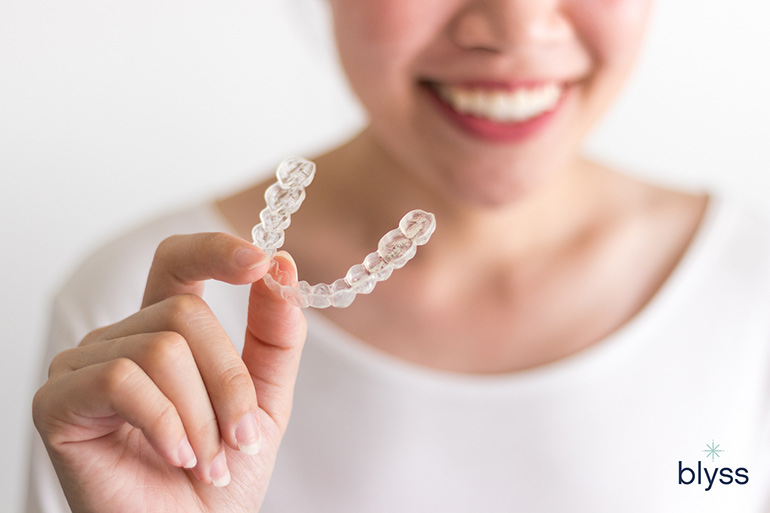Dental problems are some of the most common health concerns most people will experience in their lives. For example, most people in the US currently have or will at some point suffer from gingivitis, or gum disease.
In this article, we’ll cover the 15 most common dental problems you might experience. Many of these are simple to treat but are even easier to prevent. Some of them are benign and purely cosmetic, while others can have serious health implications if not treated.
So, what are the most common dental problems? We’ll dive into each problem’s causes and treatments. Let’s get started.
Top 15 Common Dental Problems
1. Toothache
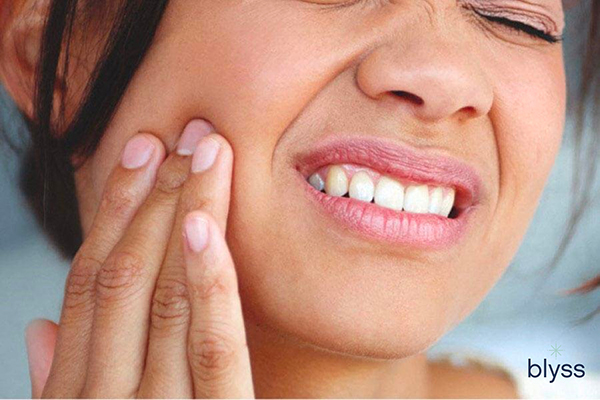
Suffering from a toothache can lead to constant pain, sensitivity to hot and cold, and even swollen gums, making everyday tasks a challenge.
A toothache, like any other pain, is your body’s way of telling you something is wrong. It can be mild and temporary, or it can be severe, long-lasting, and debilitating.
A toothache can be caused by:
- cavities
- infection of the nerve
- trauma to the tooth
- failed restorative treatment (fillings, crown)
- teeth grinding, and/ or
- gum disease.
If a toothache lasts longer than 24 to 48 hours, is causing extreme pain, or is in conjunction with other symptoms such as swelling, it’s best to see a dentist as quickly as possible. Severe or long-lasting toothaches are often scheduled as emergency appointments, as they typically indicate a problem that requires immediate attention.
2. Tooth Decay
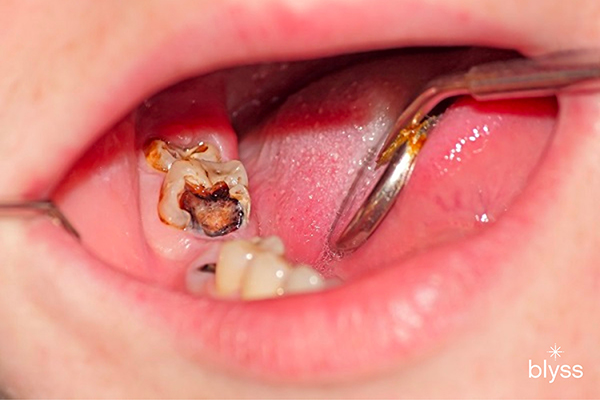
Tooth decay results from plaque buildup that produces damaging acids that attack the tooth enamel, creating cavities that can cause pain and tooth loss.
Decay occurs when the enamel and/ or dentin of the tooth begin to break down due to the release of acid by bacteria that consume glucose. This will happen if the teeth aren’t properly cleaned regularly and/ or are exposed to a diet high in glucose.
The simplest way to prevent tooth decay is to brush your teeth thoroughly at least twice a day with fluoridated toothpaste and floss daily. Regular checkups with the dentist will also help identify any teeth that might not be getting enough attention.
Keeping sugary and starchy foods in check will also help to minimize the risk of tooth decay. It’s often thought that it’s the sugar itself that causes cavities. In reality, the sugar feeds the bacteria in the mouth. The bacteria then produce acid as a by-product that results in tooth decay.
Tooth decay should be treated by a dentist as soon as possible to avoid long-term complications.
If left untreated, tooth decay can lead to
- infections deep within the tooth
- weakening of the tooth to the point it breaks and/ or
- eventual loss of the tooth.
3. Failed Implant
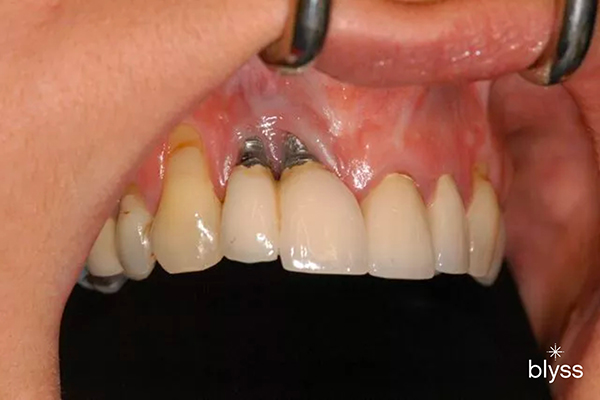
Failed dental implants can lead to severe pain, infection, and even bone loss if not treated quickly, making it crucial to visit your dentist immediately.
Dental implants are one of the best modern advances in dentistry. They allow dentists to replace teeth right down to the root, something no other treatment can do.
Properly installed and cared for, a dental implant will last many decades. However, there are some reasons why an implant might fail:
- infection from poor oral hygiene,
- poor positioning of the original implant,
- insufficient bone volume in the jaw,
- trauma, and/ or
- underlying/ systemic conditions, such as diabetes or smoking.
If your implant is placed by a reputable and experienced dental practitioner, it’s very unlikely that the implant will fail on its own. The most likely cause is trauma or poor oral hygiene. Brushing and flossing your teeth is always important, even for dental implants.
Gingivitis and periodontitis can weaken the implant and cause it to fail, and sometimes a failed implant is not possible to replace.
4. Lost Crown
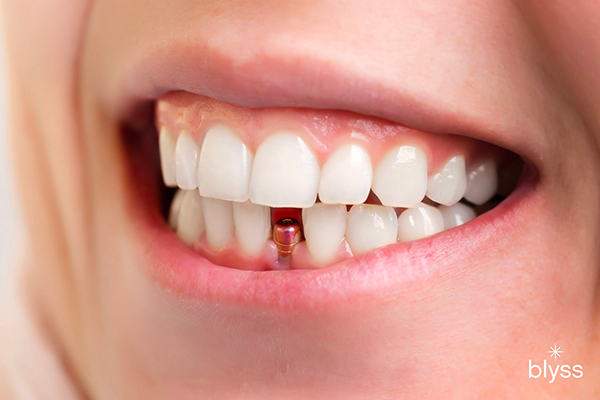
A dental crown coming loose and falling off is a common dental problem that can happen due to physical injury, an improper fit, or an unhealthy tooth beneath the crown.
A dental crown is used to repair a chipped or broken tooth or to cover a dental implant. Sometimes these can come loose and go missing.
There are several reasons a patient might lose a crown. Physical trauma is the most common. It’s also possible the crown was not properly cemented into place or was not a proper fit, but this is incredibly uncommon.
Infection, disease, and the continuing deterioration of the underlying tooth can also result in a lost crown.
If you lose a crown, return to the dentist immediately for an evaluation for a replacement.
5. Teeth Grinding

The seemingly harmless habit of teeth grinding, or bruxism, can have serious consequences for your dental health, making it crucial to practice relaxation methods and consider using a protective mouth guard at night.
Bruxism, or teeth grinding, is usually a subconscious behavior. People typically grind their teeth subconsciously when stressed, anxious, excited, or even while sleeping.
This results in teeth being worn down, increasing the risk of chips, cracks, and failed restorative treatments.
Behavioral and lifestyle changes can help alleviate grinding during the day. Partaking in restful activities, such as reading a book before bed, can prevent nighttime teeth grinding. A custom mouth guard for nighttime use can be made to protect the teeth from the negative effects of grinding.
6. Worn Teeth
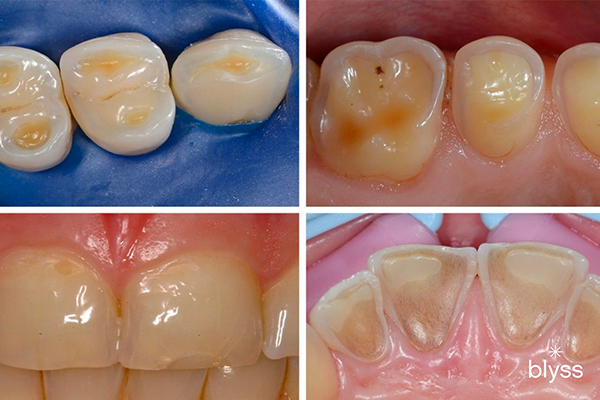
Worn teeth, often seen in older individuals or those who grind their teeth, can lead to weakened and damaged teeth, making it harder to chew and enjoy food properly.
Our teeth wear down over time—it’s an unavoidable consequence of using them every day. And as medical care improves in the general population, people are living longer and keeping their natural teeth longer. This means patients with worn-down teeth are becoming more common, particularly in older generations.
Teeth grinding (see above) can accelerate the natural wear-and-tear process. This can result in younger patients having teeth that are significantly worn well before their time.
Worn teeth can be addressed with veneers or dental crowns. Not treating them can result in the teeth becoming susceptible to damage as well as difficulty chewing.
7. Tooth Sensitivity

Experiencing a sharp, shooting pain while enjoying ice cream or sipping hot cocoa might mean you have tooth sensitivity
When you experience a sudden pain in response to different temperatures, such as when eating ice cream or drinking a hot beverage, you have a sensitive tooth.
Tooth sensitivity usually indicates the enamel is wearing down, exposing the sensitive hard tissues underneath (referred to as dentin). Special toothpastes are available to help block the little tubes in the dentin that make your teeth sensitive. Your dentist may also be able to provide treatment to restore the teeth, depending on how severe the issue is.
Like a toothache and tooth decay, tooth sensitivity may indicate an underlying issue that needs to be addressed by a dentist sooner rather than later.
8. Bleeding Gums
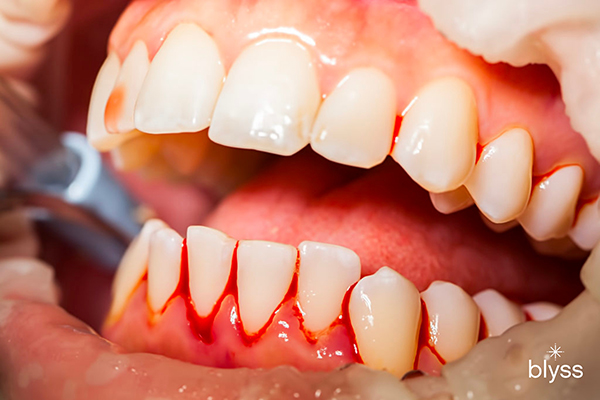
Bleeding gums are an early warning sign of gum disease which can progress to tooth loss and impact overall health
Gums that bleed are a sign of gingivitis, or gum disease. As we said in the introduction, gum disease is one of the most common health problems in the world; most people will have it at some point in their lives.
Gum disease is easily prevented with good oral hygiene. Brushing and flossing can even treat mild cases.
Left untreated, gum disease can progress into periodontal disease, where the immune system attacks the bone around the root of a tooth.
This can lead to
- loss of bone volume in the jaw
- eventual loss of the tooth, and/ or
- increased risk of cardiovascular diseases and preterm labor
9. Gum Recession
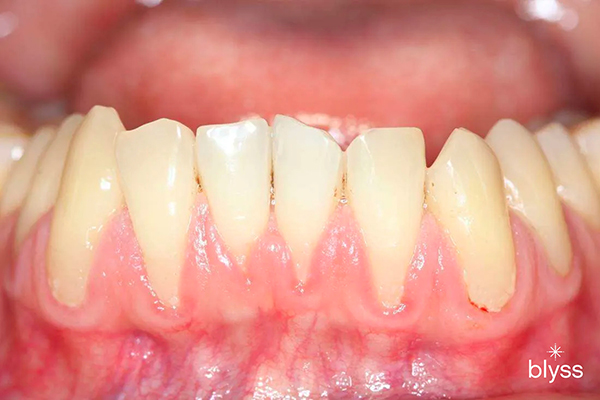
Gum recession results from the shrinking gums that expose the sensitive roots of your teeth, increasing the risk of cavities, discomfort, and tooth loss.
Receding gums is when the gums start to shrink back from their original size, revealing more of the tooth and giving it an elongated appearance.
This is typically related to gum disease and periodontitis. Gum recession is not reversible, though gum grafts are possible but not always successful.
10. Bad Breath

Frequently caused by mouth infections or diseases, bad breath is a common dental problem that can be tackled through proper dental care and regular dentist visits.
Bad breath can originate in the mouth or the gut.
For bad breath in the mouth, the cause is typically an infection or disease—gum disease, periodontitis, and/ or an abscess.
Proper oral hygiene can prevent most of these causes. If decay or infection has already set in, visiting the dentist to treat the underlying issue is the best course of action. The bad breath should resolve soon after the issue is treated.
11. Missing Teeth
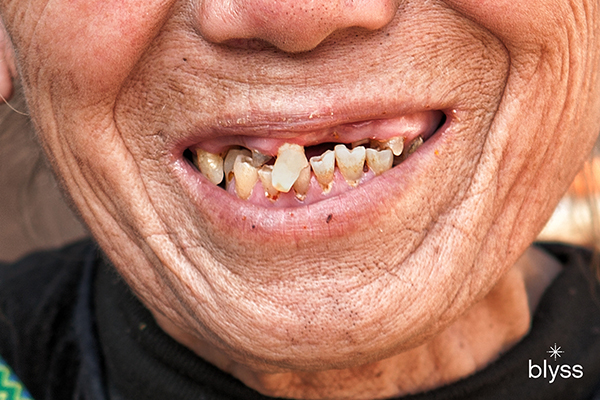
A missing tooth leaves an empty gap that can affect your chewing ability, cause other teeth to shift, and may lead to bone loss in the jaw
Whether from injury or disease, sometimes teeth fall out of the mouth or need to be extracted. It’s best to replace missing teeth for a number of reasons, including:
- improved chewing
- prevention of neighboring and opposing teeth from drifting into the spot of the missing tooth, and/or
- preservation of bone volume
To replace a missing tooth, you can consider a partial denture, dental bridge, or dental implant.
We have a helpful article you can read here that discusses the differences between these treatments.
12. Chipped Tooth
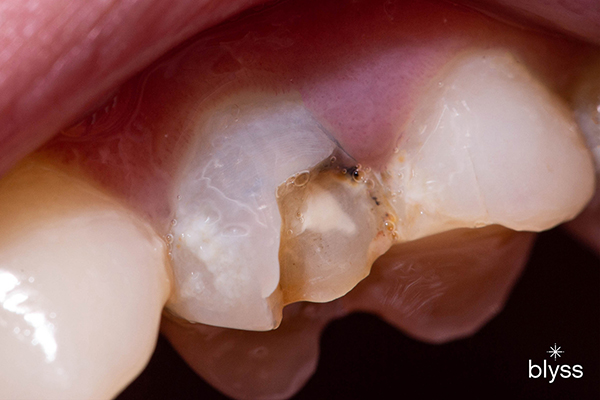
A chipped tooth, often caused by biting on hard foods or objects, can result in a jagged appearance and potential sensitivity when eating and drinking.
Chipping a tooth, especially a front tooth, is a fairly common injury. A tooth can be chipped by a sports injury or a fall, especially in children.
It’s important to get chipped or traumatized teeth evaluated quickly. If the chip is bad enough, it may expose some of the sensitive inner tissues of the tooth. Depending on where the tooth is chipped and how much tooth structure is missing, the tooth can be restored with a dental veneer, restoring the shape and function of the tooth.
13. Crooked Teeth

Crooked teeth, often caused by genetics or poor oral hygiene, can lead to an uneven smile and even affect how you bite or chew food, making it important to seek orthodontic treatment.
Teeth that are crooked, or crowding, is typically a genetic issue and is caused by how the adult teeth erupt into the jaw during adolescence. The jaw might be too small to accommodate all the teeth in proper alignment, or one tooth may erupt in an abnormal position, causing the neighboring and opposing teeth to be out of alignment.
Depending on the severity of the condition, crooked teeth can lead to grinding of the teeth and difficult cleaning. This can increase the chance of gum disease, dental decay, and worn teeth over time. Orthodontic treatments such as braces or Invisalign are used to correct crooked teeth. In severe cases, jaw surgery may be necessary.
14. Stained Teeth
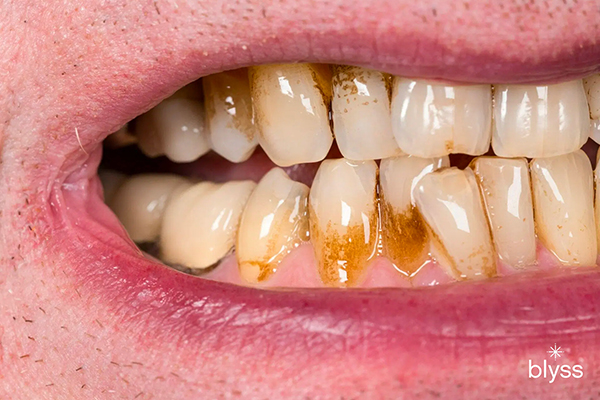
Stained teeth, ranging from mild yellowing to severe discoloration in shades of brown or black, appear as one of the most prevalent dental issues, resulting from numerous factors such as diet, tooth decay, or infection.
Teeth turning yellow, brown, or even black can be a cause for concern for patients.
Teeth stain for a variety of reasons. The most common is simply usage: consuming colored foods and drinks will cause the enamel to stain over time. Tea, coffee, red wine, dark chocolate, leafy greens, and berries will stain the teeth notably faster. This type of staining can be treated successfully with professional or at-home teeth-whitening treatments.
Yellow teeth are purely a cosmetic issue and don’t pose any health concerns.
Sometimes staining can be a sign of decay or infection in the tooth. This can be the case when teeth are turning brown or even black. In these cases, it will be necessary to have the tooth or teeth inspected by a dentist to address the root cause.
15. White Spots
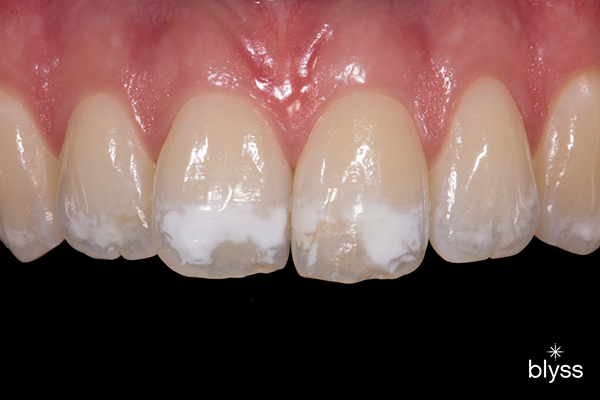
Characterized by their distinctive milky-white hue, these scattered spots on teeth signify underlying issues with tooth enamel, such as early signs of dental caries or fluorosis.
White spots on teeth have four main causes:
- Demineralization, where mineral deficiencies in the teeth cause discoloration.
- Conditions such as Turner’s tooth, where there is deficiency in the quality or thickness of enamel. This can be a result of tooth decay.
- Fluoridation, where too much fluoride is consumed in the formative years, causing discoloration.
- Orthodontic treatment, where poor oral hygiene surrounding the brackets results in the beginning states of tooth decay.
Pastes with milk proteins, teeth whitening, fillings, and/or dental veneers can address white spots that are an esthetic concern without affecting the health of the teeth.
How to Prevent Common Dental Problems
Some of the problems listed above are fairly benign. Others can have potentially serious health complications if left untreated.
However, most of the issues on this list can be solved with a very simple oral hygiene regime:
- brush at least twice a day for two minutes,
- floss between teeth at least once a day, and
- visit the dentist every 3-12 months.
That’s because most of the issues above are caused by either infection or decay. Both of these can, for the most part, be effectively prevented through brushing and flossing alone.
Lifestyle changes can also help prevent issues.
- Alcohol and smoking can make you more susceptible to infection and decay, so it’s best to avoid them.
- Foods such as berries, wine, tea and coffee may stain your teeth, so it’s best to avoid them.
- Sports can cause trauma to your teeth, so it’s best to wear a mouthguard during contact sports and/ or if you grind your teeth.
It must be noted, however, that genetics can and do play a part in our oral health. Crooked teeth, for example, are usually a result of genetics rather than environmental factors. Also, genetics can make us more susceptible to infection and decay. The natural shape of our mouths might mean we are more likely to grind our teeth.
Conclusion
There is a lot we can do to prevent issues, but sometimes things are beyond our control. That’s why it’s so important to see the dentist regularly. They can identify problem areas long before they have a serious effect on your health.
If you’re experiencing one of these problems or want to try to prevent them, contact the team at Blyss Dental today to schedule an appointment. You’ll receive a thorough examination and cleaning, and if necessary, a treatment plan that we can use to get your dental health back on track.
Sources Cited From
- Toothache. (n.d.). Toothache – Illnesses & Conditions | NHS Inform. https://www.nhsinform.scot/
illnesses-and-conditions/ mouth/ toothache - Oral health. (2023, March 14). Oral Health. https://www.who.int/
news-room/ fact-sheets/ detail/ oral-health#:~:text=Periodontal%20(gum) %20disease&text= Severe%20periodontal%20 diseases %20are%20estimated, oral%20hygiene%20 and%20 tobacco%20 use. - Periodontal Disease | Oral Health Conditions | Division of Oral Health | CDC. (2013, July 10). Periodontal Disease | Oral Health Conditions | Division of Oral Health | CDC. https://www.cdc.gov/
oralhealth/ conditions/ periodontal-disease.html - Kang, D. W., Kim, S. H., Choi, Y. H., & Kim, Y. K. (2019, July 10). Repeated failure of implants at the same site: a retrospective clinical study. PubMed Central (PMC). https://doi.org/
10.1186/ s40902-019-0209-1 - Bad breath – Symptoms and causes. (2018, March 10). Mayo Clinic. https://www.mayoclinic.org/
diseases-conditions/ bad-breath/ symptoms-causes/ syc-20350922 - PC, K. D. (n.d.). 10 Common Dental Problems and Treatment. 10 Common Dental Problems and Treatment – Kneib Dentistry PC. https://www.kneibdentistry.com/
dentistry-blog/ 10-common-dental-problems-and-treatment - 15 Common Dental Problems and Tooth Diseases. (2021, November 4). WebMD. https://www.webmd.com/
oral-health/ss/ slideshow-tooth-problems


